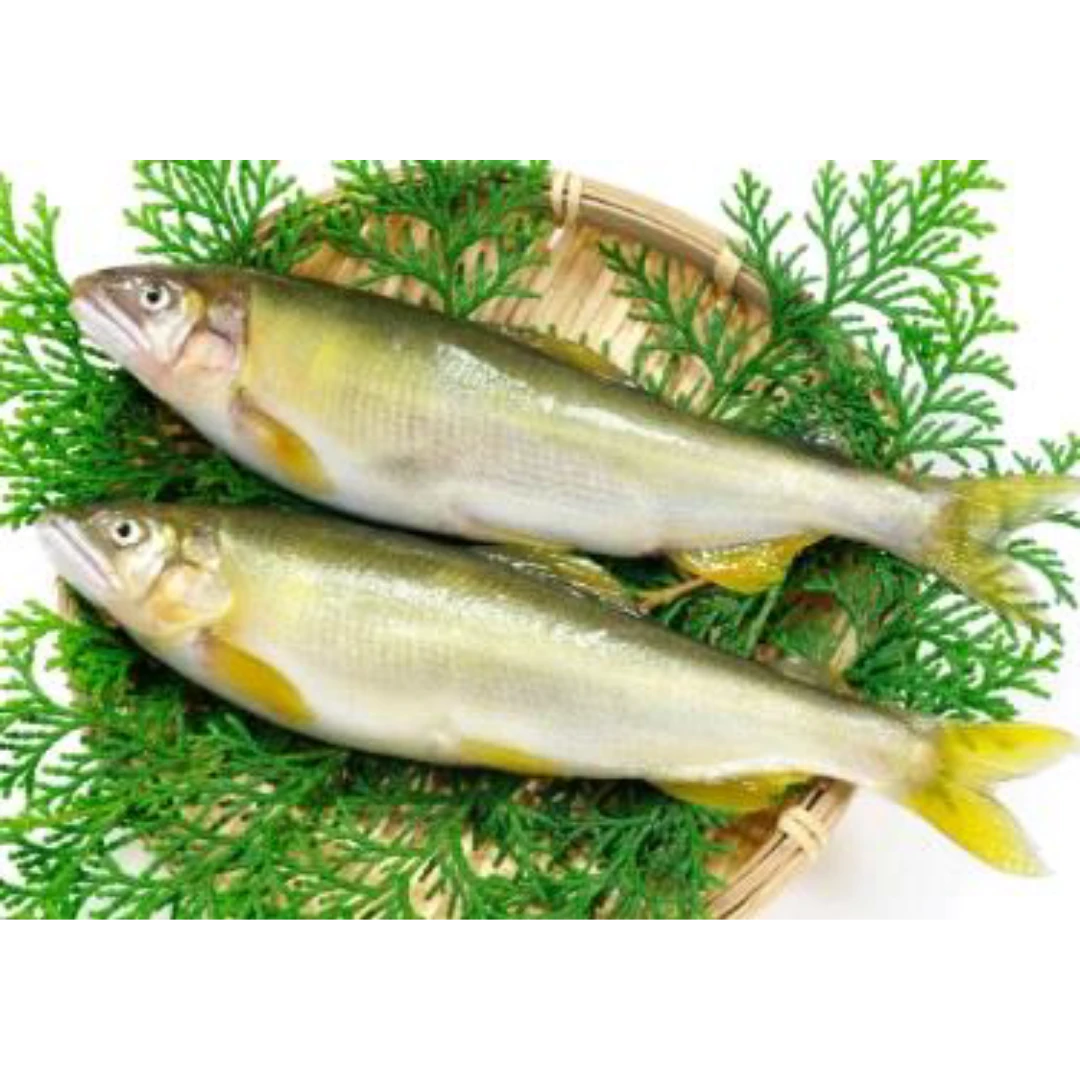AYU - FRESH FARMED SWEETFISH - Plecoglossus altivelis altivelis

Description
鮎 AYU - FRESH FARMED SWEETFISH - Plecoglossus altivelis altivelis
Location/Origin
Gifu
Size/Weight
0.25 - 1.5 lbs per piece (Actual Weight May Vary)
Texture/Flavor Profile
Ayu, also known as "sweetfish," offers a distinct, sweet flavor often compared to the aromas of melon and cucumber. Its delicate and soft flesh has a slightly sweet umami taste. The fish’s natural sweetness comes from its diet of algae and other river organisms.
Availability/Seasonality
Ayu is generally in season during the summer months, with peak quality between June and August. However, farmed Ayu can be found year-round. Wild-caught Ayu is more sought after for its intense flavor, while farmed Ayu is fattier and more tender.
About
Scientific Name: Plecoglossus altivelis
Ayu is native to East Asia and is found in freshwater rivers, lakes, and coastal waters around Japan, Korea, China, and Taiwan. The species is amphidromous, meaning it migrates between freshwater and saltwater during its life cycle. It is revered in Japanese culture, often considered a symbol of summer, and has a lifespan of typically one to three years.
Preparation
Ayu is versatile and can be prepared in several ways. It is often grilled with salt, skewered in a wave-like shape to resemble a swimming fish, which enhances its presentation and flavor. This fish is also commonly deep-fried, broiled, or simmered. Its small bones and edible innards add to the overall flavor, making it suitable for sashimi or tempura. The slightly bitter taste of the fish's innards is considered a delicacy by many.
Summary
The Ayu sweetfish is a cherished delicacy in Japan, known for its sweet, subtle flavors and tender flesh. It is enjoyed grilled, fried, or even served as sashimi, offering a unique taste experience that embodies the essence of summer.
Location/Origin
Gifu
Size/Weight
0.25 - 1.5 lbs per piece (Actual Weight May Vary)
Texture/Flavor Profile
Ayu, also known as "sweetfish," offers a distinct, sweet flavor often compared to the aromas of melon and cucumber. Its delicate and soft flesh has a slightly sweet umami taste. The fish’s natural sweetness comes from its diet of algae and other river organisms.
Availability/Seasonality
Ayu is generally in season during the summer months, with peak quality between June and August. However, farmed Ayu can be found year-round. Wild-caught Ayu is more sought after for its intense flavor, while farmed Ayu is fattier and more tender.
About
Scientific Name: Plecoglossus altivelis
Ayu is native to East Asia and is found in freshwater rivers, lakes, and coastal waters around Japan, Korea, China, and Taiwan. The species is amphidromous, meaning it migrates between freshwater and saltwater during its life cycle. It is revered in Japanese culture, often considered a symbol of summer, and has a lifespan of typically one to three years.
Preparation
Ayu is versatile and can be prepared in several ways. It is often grilled with salt, skewered in a wave-like shape to resemble a swimming fish, which enhances its presentation and flavor. This fish is also commonly deep-fried, broiled, or simmered. Its small bones and edible innards add to the overall flavor, making it suitable for sashimi or tempura. The slightly bitter taste of the fish's innards is considered a delicacy by many.
Summary
The Ayu sweetfish is a cherished delicacy in Japan, known for its sweet, subtle flavors and tender flesh. It is enjoyed grilled, fried, or even served as sashimi, offering a unique taste experience that embodies the essence of summer.


